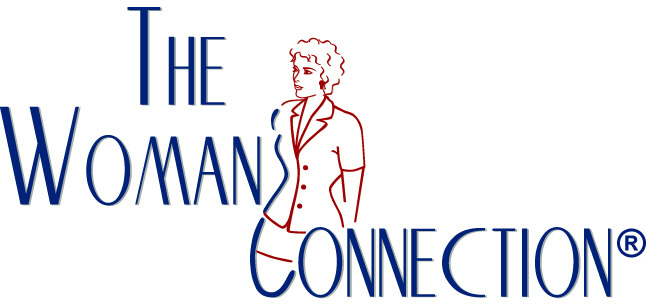"Reducing Skin Aging- How to Get The Wrinkles Out!" By Shari Lieberman, Ph.D., CNS, FACN
/ Researchers examined the diets of approximately 2,000 people who were 70 years and older to see if what they ate made a difference in the youthfulness of their skin. The participants were from Australia, Greece, China, Japan and Sweden.
Rather than using the skin on the face, the skin on the back of the hand was examined and tested to assess actinic damage or skin aging. The back of the hand was used since some participants may have been using cosmetic products that reduce skin aging and wrinkling on the face. A silicon rubber impression method was used to keep an actual model of the skin, its texture and signs of wrinkling for each participant.
Oxidative stress in skin is induced by sun damage and inflammation. Also, when damage occurs (e.g. exposure to sunlight) antioxidants in skin may undergo depletion. If antioxidants are not replenished continuously, deterioration of the skin can occur leading to accelerated skin aging and wrinkling.
Topical application of numerous antioxidants such as vitamins C and E, Coenzyme Q10, alpha-lipoic acid, and flavonoids in green tea, have been shown to decrease sun damage and protect the skin against aging, improve skin wrinkling and possibly prevent skin cancer. Studies using oral antioxidant supplements of vitamins C and E simultaneously have also shown a reduction in sun damage and wrinkling of skin. However, this is the first time that daily food intake was examined to see if specific foods would protect the skin, reducing wrinkles and other signs of aging.
SOME SURPRISING RESULTS
Overall, those with a higher intake of vegetables, legumes, olive oil, monounsaturated fat (e.g. olive oil) and legumes, but a lower intake of milk and milk products, butter, margarine and sugar products had less skin wrinkling and aging. Eggs, yogurt, legumes (especially broad and lima beans), vegetables (especially green leafy, spinach, eggplant, asparagus, celery, onions, leeks, garlic), nuts, olives, cherries, melon, dried fruits (in particular prunes, apples and pears), multigrain bread, jam, tea and water were all shown to protect against skin wrinkling and aging. Higher intakes of vitamin C, calcium, phosphorus, magnesium, iron, zinc, and retinol (vitamin A) were also very protective against skin wrinkling and aging. Whole milk sweet milk desserts, ice cream, red meat (especially processed meat), potatoes, soft drinks, cordials, cakes and pastries were associated with increased skin wrinkling and aging.
HOW ARE THESE FOODS PROTECTIVE?
Vegetables have a high content of antioxidants beyond vitamins C and E and beta-carotene. In particular, flavonoids and other powerful phytonutrients present in foods such as tea, apples, onions, garlic and eggplant are extremely powerful antioxidants. Tufts University has identified prunes, strawberries, berries, cherries, and tea to have some of the highest antioxidant activity compared to other foods. These foods are rich sources of polyphenols have a higher antioxidant activity than vitamins C or E. Legumes are a rich source of phytoestrogens that also have potent antioxidant activity. Collectively, these powerful antioxidants protected the skin against wrinkling when consumed in the diet.
Fish intake was shown to reduce skin wrinkling when consumed with other protective foods such as vegetables. Fish is a rich source of PUFA in the form of eicosapentaenoic acid (EPA) and docosahexaenoic acid (DHA). While EPA and DHA are extremely important essential fatty acids that are not only important for skin, but for the cardiovascular and immune system as well, they are still susceptible to oxidation because they are categorized as PUFA. Therefore, a higher intake of fish must be accompanied by a higher intake of antioxidants.
A diet rich in monounsaturated fat (MUFA) from olives and olive oil may increase the MUFA content of skin. MUFA is much more resistant to oxidative damage than polyunsaturated fats found in other types of oil. Also, oil assists the absorption of fat-soluble antioxidants such as vitamin E and lycopene. Margarine is made of polyunsaturated fatty acids (PUFA) and frequent intake was associated with more skin wrinkling and aging. This may also be due to the more damaging effects of trans fatty acids and their greater susceptibility to oxidative stress than other PUFA. Margarine contains far more trans fatty acids that are formed during the hydrogenization process than would ever be found in nature. Even though saturated fats resist oxidation, foods high in saturated fat such as meat and butter did not protect against skin aging and wrinkling.
High sugar intake was associated with greater skin wrinkling. This may be due to a greater production of advanced glycosylation end products (AGE) and less clearance of these damaging compounds. AGE are found in excess as a result of the aging process and also with conditions such as diabetes. AGE are closely associated with oxidative stress and have similar damaging effects.
SAVE YOUR SKIN
The skin is very susceptible to oxidative damage due its high content of lipids, proteins and DNA all of which are extremely sensitive to the oxidation process. By consuming more vegetables, legumes and switching to olive oil (preferably extra virgin) and eating less meat, dairy, butter and sugar you can protect your skin against wrinkling and aging.
Selected References
1. Purba M, Kouris-Blazos A, Wattanapenpaiboon N et al. Skin wrinkling: can food make a difference? JACN 2001;20(1):71-80.
2. Boulanger E, Dequiedt P, Wautier JL. Advanced glycosylation end products (AGE): new toxins? Nephrologie 2002;23(7):351-9.
3. Shapiro SS, Saliou C. Role of vitamins in skin care. Nutrition 2001;17:839-844.
HER BOOKS TO PURCHASE
The Real Vitamin and Mineral Book
Get Off the Menopause Roller Coaster: Natural Solutions
